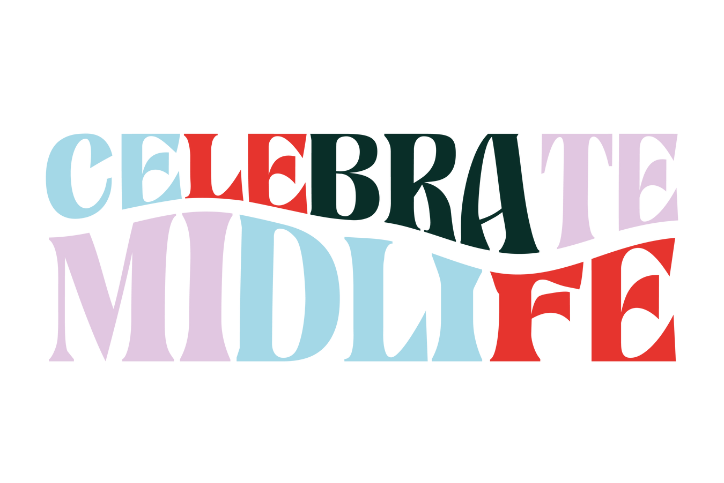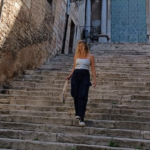Chile
ABOUT CHILE
Chile is the longest country in the world, but also the most narrow. It stretches like a ribbon along the western edge of South America, and is framed by the Andes mountain on one side and the pacific ocean on the other.
You can see it all here: The driest non-polar desert in the world; a volcanic island that still holds the secrets of civilizations past; giant tortoises lumbering about without a care in the world; and a nightsky so dark and starry, you feel small while taking in the splendour of it all.
Chile is truly a magical place to be, and I hope you get the chance to see it.
WHAT CAN I EXPECT FROM CHILE
Nature
Start your adventure in the Atacama Desert–the driest desert in the world. NASA uses it to test equipment for Mars missions because its harsh conditions make it look like you’re on another planet.
Since there’s almost no rain, the skies are incredibly clear at night, making them perfect for stargazing. It’s truly a sight to behold the shimmering sky, and the Milky Way stretching across the darkness like a river of diamonds.
Desolation and beauty coexist in Patagonia, Chile’s southernmost region. There aren’t many buildings or people around. But that also means nature is untouched and wild, and that’s what makes it so beautiful. It’s virgin forests, blue skies, snow-capped mountains, and crystal clear lakes as far as the eye can see.
Hike the legendary Carretera Austral, for a scenic trip, or embark on a challenging trek through Cerro Castillo National Park. Here, you’ll be surrounded by towering granite spires, glaciers, and emerald valleys.
The trek itself will be demanding, but the reward is the satisfaction of conquering this rugged terrain and the privilege of witnessing Patagonia’s untouched beauty firsthand.
History
Easter Island (Rapa Nui National Park) is a UNESCO World Heritage Site, and a must visit when you’re in Chile. This remote island in the Pacific, holds an undeniable mystique. Here, hundreds of monumental moai statues, carved by the Rapa Nui people centuries ago, stand tall on the windswept shores.
Their exact purpose remains a speculation, but it is so fascinating to contemplate the incredible effort that went into their creation. Imagine generations working together, transporting and carving these massive figures with only primitive tools.
Standing beside a moai, you can’t help but feel a connection to those ancestors past, wondering about the secrets they carried and the stories etched in stone.
High in the Andes Mountains lies Sewell, a former mining town that thrived during the early 20th century. Nicknamed the “City of Stairs” for its unique geography, Sewell is a well-preserved example of industrial architecture and urban planning. It’s a UNESCO World Heritage Site and offers a glimpse into Chile’s mining history.
The Humberstone and Santa Laura Saltpeter Works is another UNESCO World Heritage Site. These former mining settlements offer a fascinating look into Chile’s industrial past. Explore the abandoned factories, houses, and public buildings, and imagine the lives of the workers who worked here in such harsh conditions.
The Best Time to Visit:
Because of the extreme diversity of Chile’s landscapes, the best time to visit depends on what you’re planning to do.
- Patagonia’s landscapes are best explored during the warm summer months (November to February). You’ll encounter crowds, but the hiking and horseback riding conditions are unbeatable.
- Shoulder seasons (September, October, March, April) offer a compromise – milder temperatures and fewer people, but pack for unpredictable weather.
- San Pedro de Atacama’s has almost rainless skies year-round. Stargazers flock here during summer (December to February) for crystal-clear nights and comfortable temperatures.
- Santiago, Chile’s vibrant capital, and Valparaiso, the charming port city, are year-round destinations. Winter (June to August) transforms Santiago into a snowy wonderland, perfect for hitting the slopes.
THINGS TO SEE AND DO IN CHILE
TYPICAL COSTS WHEN TRAVELLING
Accommodation – In Chile, accommodations range from cozy mountain lodges that cradle you in the Andes’ embrace to chic urban hostels where the vibe is as vibrant as Santiago’s nightlife. Whether you’re sipping pisco sours by the Pacific or stargazing in the Atacama, Chilean stays offer more than just a place to rest your head—they’re gateways to unforgettable adventures. Plus, with Wi-Fi as strong as their coffee, you’ll never miss a chance to Instagram your escapades!
On a Budget
- Hostels: A dorm bed in a hostel typically costs between $6 and $25 per night, while a private room can go up to $40.
- Cabanas: These traditional wooden cabins are charming and affordable, and mostly available outside major cities . Prices generally fall within the $30 to $80 per night range.
Mid-Range
- Hotels: Hotels offer basic amenities and comfortable rooms for $30 to $80 per night. Major cities like Santiago, Valparaíso, and Viña del Mar have higher hotel rates due to demand and amenities. Expect to pay $80 to $150 per night for a mid-range hotel room
Luxury
- For a pure luxury Chilean experience, prices range from $200 to $500 a night. This includes spacious rooms, fancy amenities, and amazing views.
Food – Chile’s cuisine is a tantalizing blend of land and sea, where hearty empanadas tango with fresh seafood ceviche. Picture yourself savoring a bowl of pastel de choclo, a comforting corn pie, while gazing at the Andes. From spicy pebre salsa to the irresistible sweetness of alfajores, Chile’s flavors are as diverse and dramatic as its landscapes. It’s a culinary adventure that will leave your taste buds dancing!
On a Budget
- Street Food: Expect to spend between $3 and $8 for a satisfying meal.
- Almuerzos: Lunchtime is prime time for deals. Look for “almuerzos,” a set menu offered at many restaurants. It typically includes a starter, main course, and dessert, all for a steal at around $5.
Mid-Range
- Local Spots: Sit down for a relaxed meal at a casual restaurant or local eatery. Expect to pay $8 to $15 for a satisfying meal.
- Restaurants: Mid-range restaurants usually cost around $15 to $30 per meal.
Luxury
- Splurge on a luxurious dining experience at a high-end restaurant. Be prepared to spend $30 or more per meal.
Transportation –
- Public Transportation: Efficient and affordable, Chile’s public transportation system gets you where you need to go. Subway and train tickets range from $1 to $3, making it easy on your wallet. Expect to spend $6 to $18 for 3 days of travel using public transport.
- Buses: Buses are undeniably the most economical option, but keep in mind they’re also the slowest. Buses reach even the remotest villages in Chile. Prices are reasonable, averaging $30 for a 1,000 km journey.
- Car Rentals: While not the cheapest option, renting a car offers flexibility for exploring at your own pace. Expect to pay around $30 per day for a small car rental, with gas priced at roughly $1.20 per liter.
- Public Transportation Passes: Consider purchasing a BIP card in Santiago for using subways and buses. It costs around $2 to top up with your desired amount. Subway rides range from $1 to $2, depending on the time of day.
Suggested daily budget – Expect to spend around $75 per day in Chile, with accommodation costing around $40, food and drink $15, and activities averaging $10. Budget for transportasion ($5), miscellaneous expenses ($2), and potentially higher costs in Patagonia or Atacama.
MONEY SAVING TIPS
THINGS TO NOTE ABOUT CHILE
- The Atacama Desert is dry most of the year, but don’t be surprised by a random rain shower in the summer (December to March). Pack a light rain jacket or poncho, just in case.
- Many places, especially outside major cities, prefer cash to card payment. You might even get a discount when you pay in cash.
- Chilean Spanish, also known as “Español chileno,” has its own twists on pronunciation. Words might sound softer, faster, or even slurred compared to standard Spanish. Don’t be discouraged – with a little practice, you’ll start to pick up the rhythm and flow.
- No matter what time of year you visit Chile, pack layers! The weather can change throughout the day, so you’ll want clothes you can add or remove to keep comfy in the hot afternoon sun and cool evenings.
- Chileans tend to be quiet in public. Avoid being too loud, especially as a tourist, to avoid unwanted attention.
- Being vegetarian in Chile might be a bit trickier than other places. If you have dietary restrictions, be prepared to eat out less or get creative with your meals. I recommend you pack some snacks or look up vegetarian restaurants beforehand, especially if you’re going to the smaller towns.
- Compared to some of its South American neighbors, Chile can be a bit more expensive. Keep this in mind when planning your trip and budget accordingly.
Charity Adams
Charity Adams, aka ChaCha, is the founder of LaChaCha. With 20+ years as a Portland Realtor and single mom, she transforms midlife from crisis to celebration, focusing on travel, wellness, and personal growth to inspire joy and enthusiasm.
















